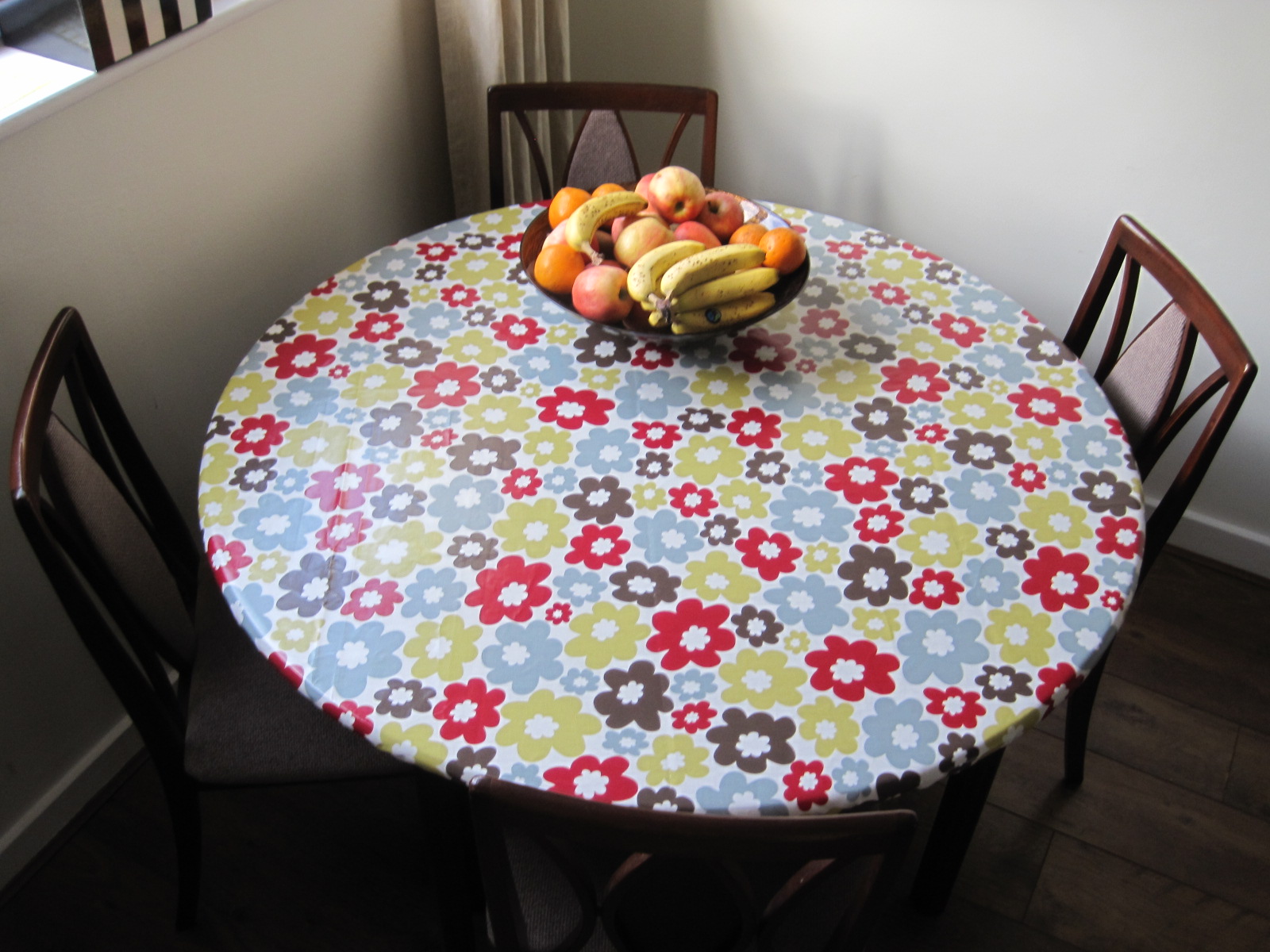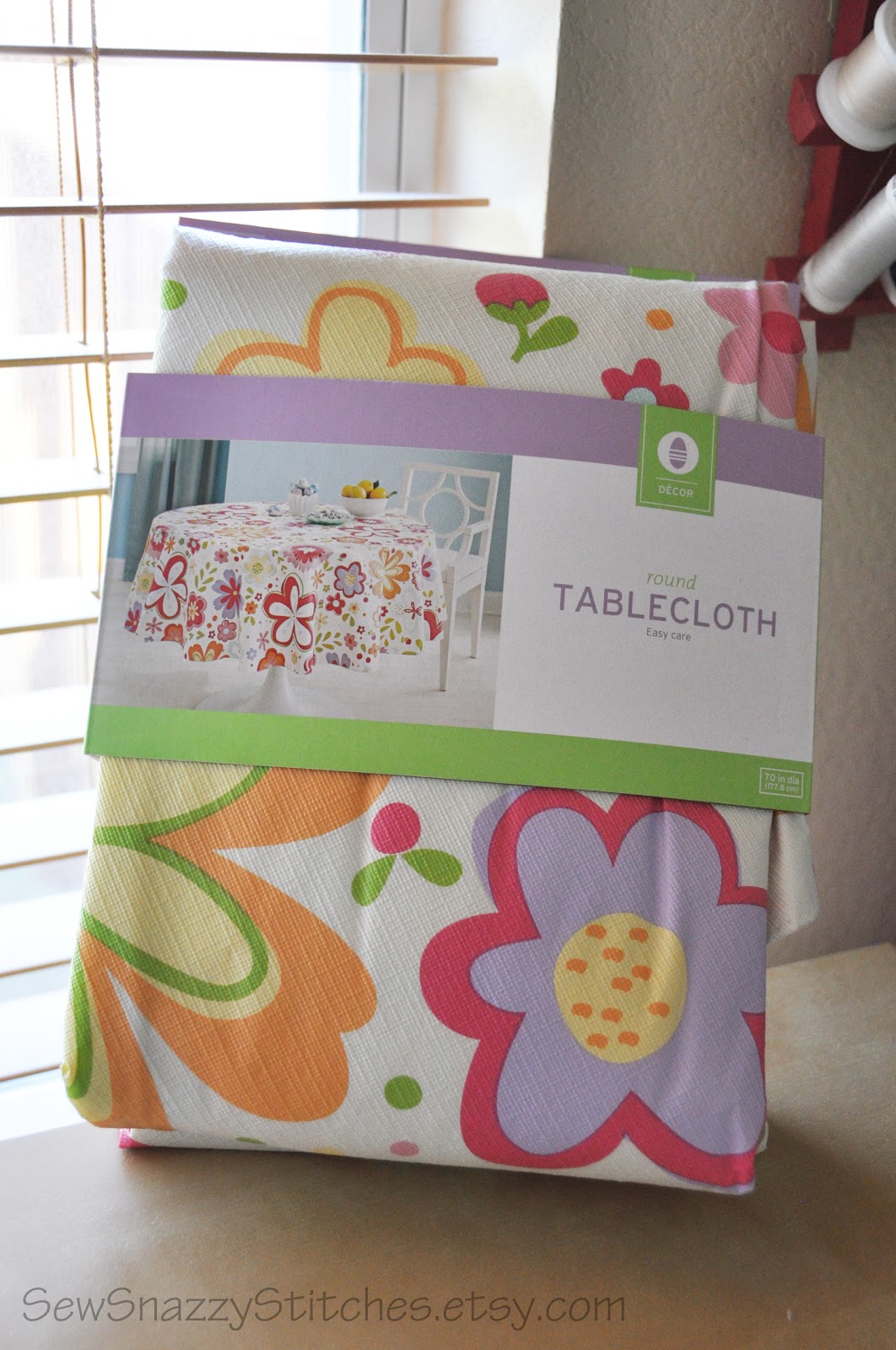Are you tired of constantly adjusting your tablecloth during mealtimes? Or do you struggle to find one that perfectly fits your dining table? Look no further, because a DIY fitted tablecloth is the solution to your woes. Not only is a fitted tablecloth more practical, but it also adds a touch of elegance and sophistication to your dining room. Plus, making your own fitted tablecloth allows you to customize it to your liking and save money in the process. So grab your sewing supplies, and let's get started on creating the perfect tablecloth for your dining room.DIY Fitted Tablecloth: A Simple and Affordable Way to Elevate Your Dining Room
The first step in making a DIY fitted tablecloth is selecting the right fabric. You want to choose a durable and easy-to-care-for material that will withstand spills and frequent use. Some popular options include cotton, polyester, and linen. Pro tip: Consider using a patterned fabric to add visual interest to your table and hide any potential stains.Tablecloth for Dining Room: Choosing the Right Fabric
Now that you have your fabric, it's time to start sewing. Follow these simple steps to create your own custom fitted tablecloth: Step 1: Measure your table Start by measuring the length, width, and height of your table. Add an extra 1-2 inches to each measurement for seam allowance. Step 2: Cut your fabric Using your measurements, cut your fabric to the desired size. Remember to add an extra 1-2 inches for seam allowance. Step 3: Hem the edges Fold over the edges of your fabric and sew them down to create a clean hem. Step 4: Create the corners To create the fitted corners, cut out four squares of fabric and fold them in half diagonally. Sew them onto the corners of your tablecloth, leaving a small opening to insert the elastic later. Step 5: Insert the elastic Measure and cut a piece of elastic that is the same length as the width of your table. Thread it through the opening in each corner, then sew the elastic ends together to create a snug fit. Step 6: Finish the corners Sew up the openings in the corners to secure the elastic in place. Step 7: Trim any excess fabric If there is any excess fabric, trim it off to create a neat and clean finish. And voila! Your DIY fitted tablecloth is now complete.Fitted Tablecloth Tutorial: Step-by-Step Guide
If you're feeling adventurous, here are some other ideas for creating your own fitted tablecloth: Use a shower curtain: Shower curtains often come in a variety of patterns and are already waterproof, making them a great option for an outdoor dining table. Repurpose a bedsheet: If you have an old bedsheet lying around, you can easily turn it into a fitted tablecloth by following the same steps as above. Add trim or embellishments: Want to add a little extra flair to your tablecloth? Sew on some lace trim, tassels, or pom poms to give it a unique touch.How to Make a Fitted Tablecloth: Other Creative Ideas
One of the best things about making your own fitted tablecloth is the ability to personalize it to your liking. Whether you want a specific color, pattern, or size, the options are endless. You can also choose to make a fitted tablecloth for a round, oval, or square table. Pro tip: Consider making multiple tablecloths for different seasons or occasions to change up the look of your dining room.DIY Tablecloth Ideas: Make It Your Own
A fitted tablecloth is not only practical for everyday use, but it's also great for special occasions and gatherings. With a custom fitted tablecloth, you won't have to worry about it slipping or shifting during a dinner party or holiday meal. Pro tip: Use a festive fabric or add seasonal decorations to your fitted tablecloth to add a touch of holiday cheer to your dining room.Custom Fitted Tablecloth: Perfect for Any Occasion
If you're new to sewing, making a fitted tablecloth may seem intimidating. But don't worry, here are some tips and tricks to help you along the way: Use a sewing machine: While you can certainly sew a fitted tablecloth by hand, using a sewing machine will save you time and ensure more precise stitching. Double-check your measurements: It's always better to measure twice and cut once to avoid any mistakes and wasted fabric. Iron your fabric: Ironing your fabric before sewing will make it easier to work with and create a more polished final product.Tablecloth Sewing Tutorial: Tips and Tricks
One of the main benefits of a fitted tablecloth is its ability to stay in place. The elastic corners ensure a snug fit and prevent any slipping or shifting. Plus, you can easily remove the tablecloth for washing and put it back on without having to readjust it each time.DIY Tablecloth with Elastic: The Perfect Fit Every Time
If you're feeling confident in your sewing skills, consider creating your own fitted tablecloth pattern. You can mix and match fabrics, add different sizes and shapes of elastic, and experiment with different corner designs. The possibilities are endless, and you'll have a truly unique fitted tablecloth for your dining room.Fitted Tablecloth Pattern: Get Creative
A rectangular dining table is a staple in most homes, and a fitted tablecloth is the perfect complement to it. Not only will it add a touch of style and functionality, but it will also protect your table from spills and scratches. In conclusion, a DIY fitted tablecloth is a simple and affordable way to elevate your dining room. With the right fabric, tools, and a little bit of creativity, you can create a custom tablecloth that fits perfectly and adds a personal touch to your home. So why settle for a plain and ill-fitting tablecloth when you can make your own? Get started on your DIY project today and enjoy meals at your perfectly fitted tablecloth tomorrow.Tablecloth for Rectangular Table: A Must-Have for Every Home
Fitted Tablecloths: The Perfect Addition to Your Dining Room

Why Consider a DIY Fitted Tablecloth?
 When it comes to designing and decorating our homes, we often overlook the importance of
dining room
furniture
. We spend so much time and effort choosing the
perfect dining table
and chairs, but forget about the finishing touch - the tablecloth. A
fitted tablecloth
not only serves as a protective layer for your table, but it also adds a touch of elegance and style to your
dining room
. Instead of buying a generic tablecloth, why not try
DIY
? Not only is it more cost-effective, but it also allows you to customize the perfect fit for your
dining table
.
When it comes to designing and decorating our homes, we often overlook the importance of
dining room
furniture
. We spend so much time and effort choosing the
perfect dining table
and chairs, but forget about the finishing touch - the tablecloth. A
fitted tablecloth
not only serves as a protective layer for your table, but it also adds a touch of elegance and style to your
dining room
. Instead of buying a generic tablecloth, why not try
DIY
? Not only is it more cost-effective, but it also allows you to customize the perfect fit for your
dining table
.
The Benefits of a Fitted Tablecloth
 A
fitted tablecloth
is designed to fit snugly over your
dining table
, covering the top and sides completely. This eliminates the need for clips or weights to keep it in place, providing a seamless and neat appearance. This type of tablecloth is also great for families with children, as it reduces the risk of spills and stains by staying in place. Additionally, a
fitted tablecloth
is more visually appealing compared to a traditional tablecloth that can easily shift or bunch up.
A
fitted tablecloth
is designed to fit snugly over your
dining table
, covering the top and sides completely. This eliminates the need for clips or weights to keep it in place, providing a seamless and neat appearance. This type of tablecloth is also great for families with children, as it reduces the risk of spills and stains by staying in place. Additionally, a
fitted tablecloth
is more visually appealing compared to a traditional tablecloth that can easily shift or bunch up.
How to Make Your Own Fitted Tablecloth
 Making your own
fitted tablecloth
may seem daunting, but it is actually a simple and fun DIY project. Start by measuring your
dining table
- you'll need the length, width, and height. Using these measurements, cut your fabric and hem the edges to prevent fraying. Next, create a casing for elastic along the entire edge of the fabric. Thread the elastic through the casing, making sure it is tight enough to fit snugly over your
dining table
. Finally, secure the elastic ends and voila! You have a perfectly fitted tablecloth for your
dining room
.
Making your own
fitted tablecloth
may seem daunting, but it is actually a simple and fun DIY project. Start by measuring your
dining table
- you'll need the length, width, and height. Using these measurements, cut your fabric and hem the edges to prevent fraying. Next, create a casing for elastic along the entire edge of the fabric. Thread the elastic through the casing, making sure it is tight enough to fit snugly over your
dining table
. Finally, secure the elastic ends and voila! You have a perfectly fitted tablecloth for your
dining room
.
Personalize Your Fitted Tablecloth
 One of the best things about making your own
fitted tablecloth
is the ability to personalize it to your taste and
home decor
. You can choose from a variety of fabrics, colors, and patterns to match your
dining room
theme. You can also add embellishments such as lace or trim to add a touch of uniqueness. The possibilities are endless when it comes to
DIY fitted tablecloths
, allowing you to create a one-of-a-kind piece for your
dining room
.
In conclusion, a
DIY fitted tablecloth
is a simple and cost-effective way to add a touch of style and functionality to your
dining room
. With its practical benefits and customizable options, it is a must-have for any
house design
. So, why settle for a generic tablecloth when you can create your own? Follow these easy steps and enjoy a beautiful and perfectly fitted tablecloth for your
dining room
.
One of the best things about making your own
fitted tablecloth
is the ability to personalize it to your taste and
home decor
. You can choose from a variety of fabrics, colors, and patterns to match your
dining room
theme. You can also add embellishments such as lace or trim to add a touch of uniqueness. The possibilities are endless when it comes to
DIY fitted tablecloths
, allowing you to create a one-of-a-kind piece for your
dining room
.
In conclusion, a
DIY fitted tablecloth
is a simple and cost-effective way to add a touch of style and functionality to your
dining room
. With its practical benefits and customizable options, it is a must-have for any
house design
. So, why settle for a generic tablecloth when you can create your own? Follow these easy steps and enjoy a beautiful and perfectly fitted tablecloth for your
dining room
.





























































































